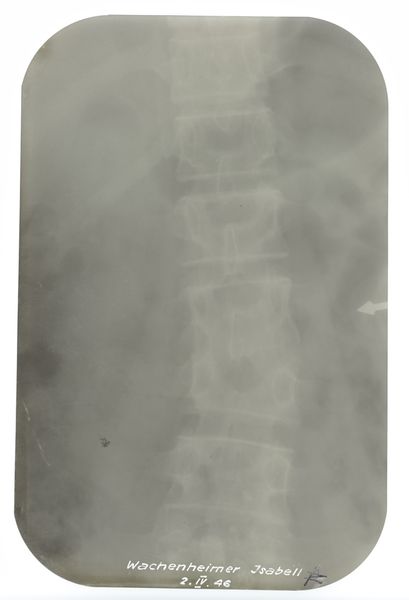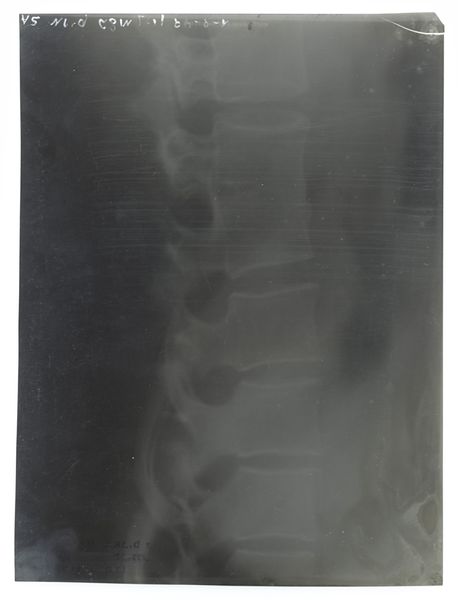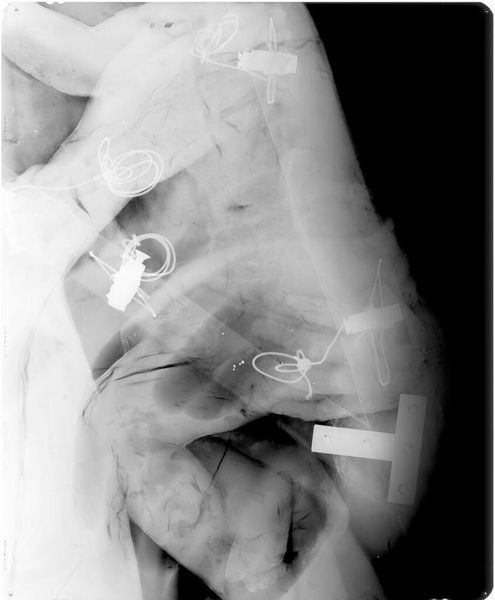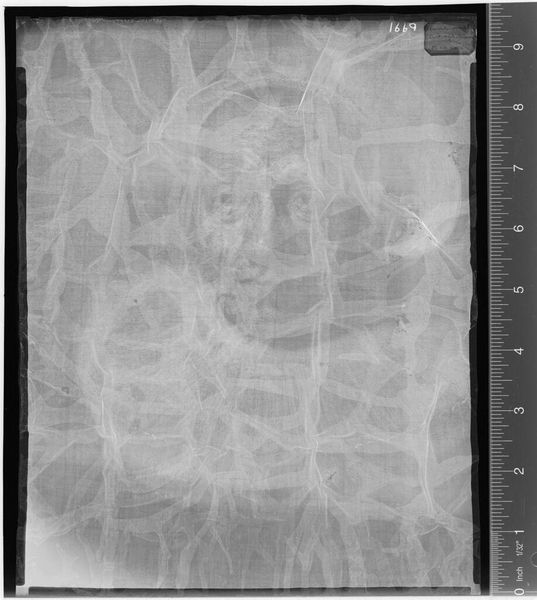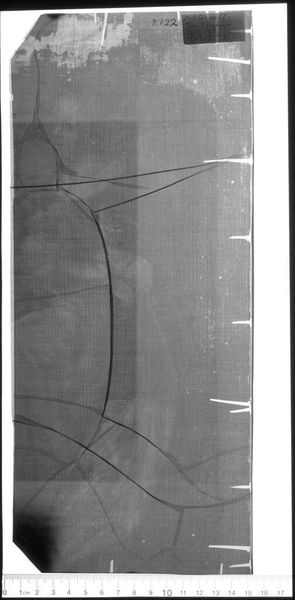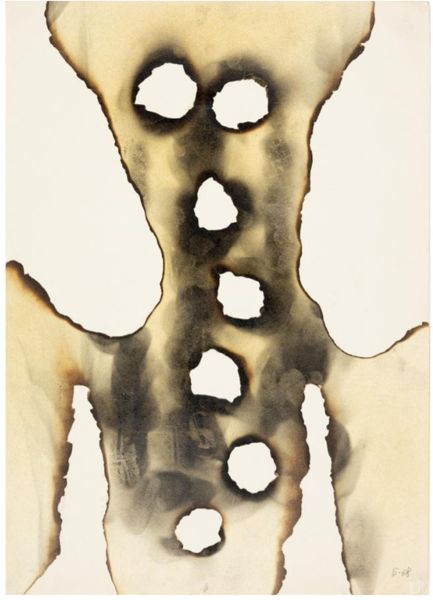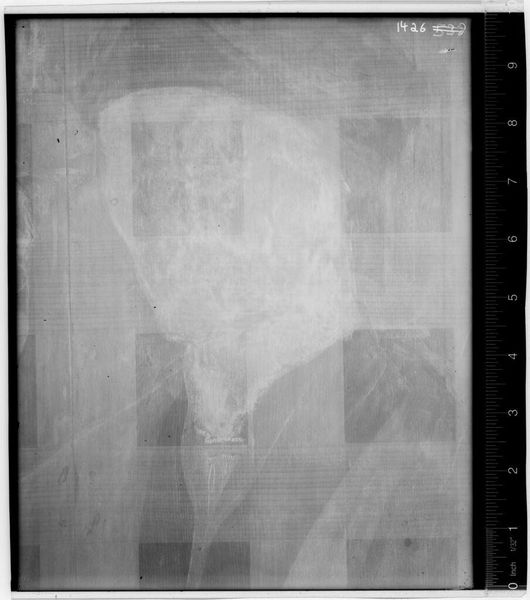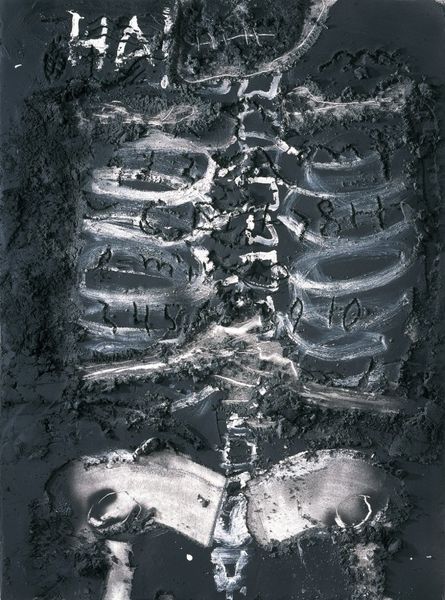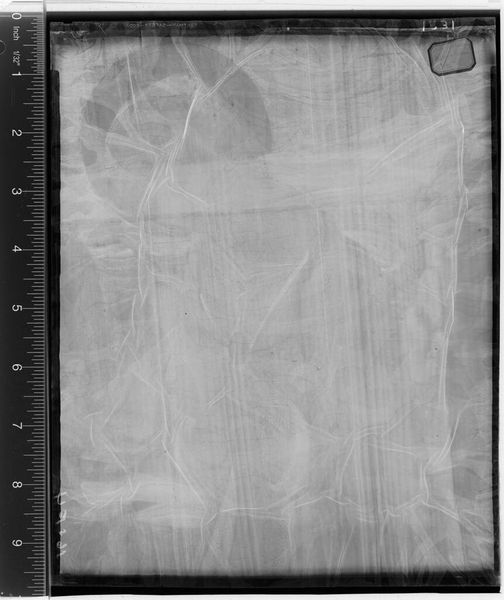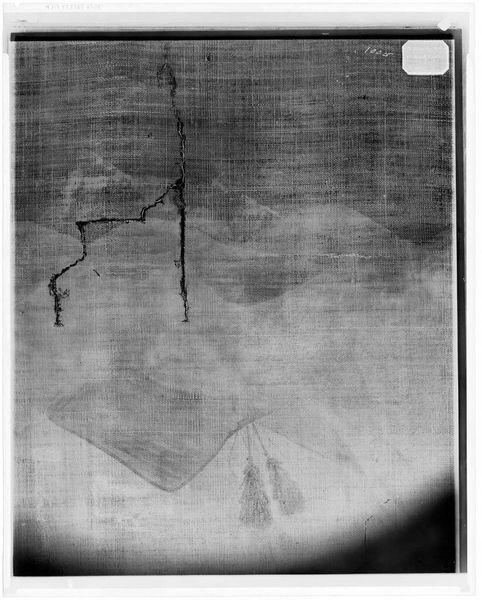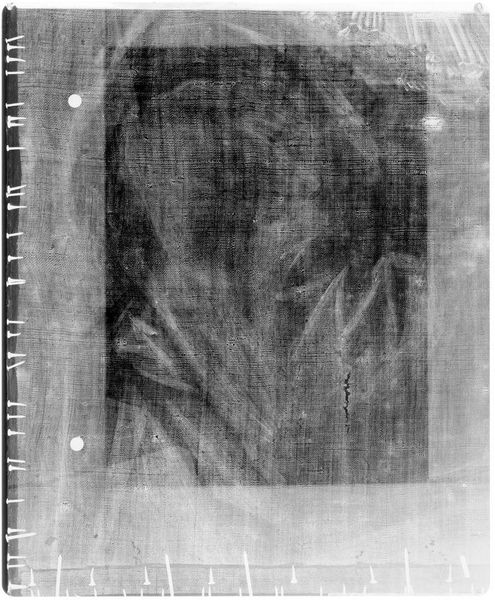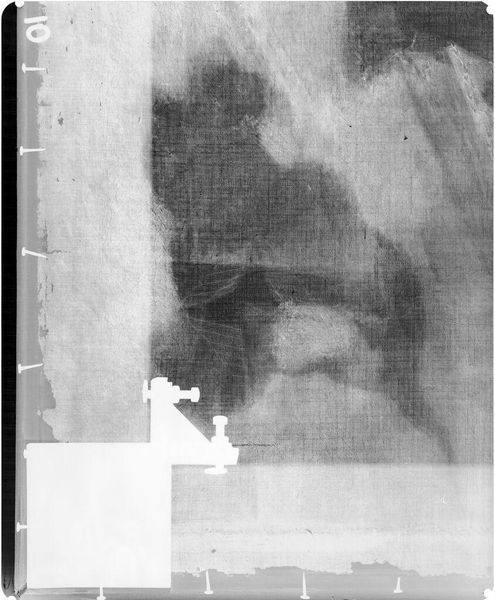
Röntgenfoto van de met TBC geïnfecteerde ruggenwervel van Isabel Wachenheimer, gedateerd op 16 juni 1948 Possibly 1948
0:00
0:00
Dimensions: height 150 mm, width 225 mm
Copyright: Rijks Museum: Open Domain
Curator: This intriguing image is titled "Röntgenfoto van de met TBC geinfecteerde ruggenwervel van Isabel Wachenheimer," or in English, "X-Ray of the TB Infected Spine of Isabel Wachenheimer," dating possibly to 1948. Editor: Immediately striking, isn't it? The grayscale shades give it an eerie, almost ethereal quality. There is such palpable vulnerability, so suggestive of pain. Curator: Indeed. The artist, though anonymous, uses the rayograph medium with stark precision. It lays bare the architecture of the spine. See how the varying densities create an abstract landscape within the human form? Editor: And how the personal becomes universal. While it's an individual's medical record, it reflects broader historical anxieties of the postwar period, a time when diseases like tuberculosis were still rampant and public health was a pressing concern, particularly among displaced populations like Isabel Wachenheimer. Curator: It's compelling how this medical image transcends its initial function. Consider the formal arrangement of vertebrae; they become sculptural forms. Note also how the slight blurring adds a softness that contrasts with the harsh clinical nature. Editor: Precisely. This blurring almost feels like a visual metaphor for the obscured histories of illness and those who suffer. Think about the medical gaze here and how it can either diagnose or dehumanize. It makes me think about structures of power that operate in medical institutions. What was Isabel's experience? How was she treated? The X-ray opens these critical questions. Curator: True. While an aesthetic object, we must never forget its grounding in lived reality. But in terms of pure visual composition, the piece uses value and form economically but achieves significant contrast through simple means. Editor: Absolutely, it provokes crucial conversations about the individual versus institutional power. The anonymous creator might have inadvertently captured far more than just a medical diagnosis: a visual statement about vulnerability, care, and historical context. Curator: Well observed. There is such a fascinating play between objectification and intimate revelation here. Editor: Definitely a photograph that warrants further inquiry on our part. The stark aesthetic and somber backstory leave a lasting impression.
Comments
No comments
Be the first to comment and join the conversation on the ultimate creative platform.
